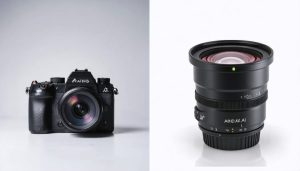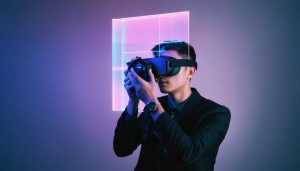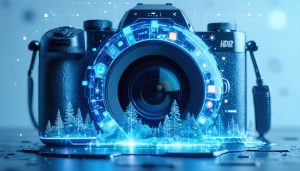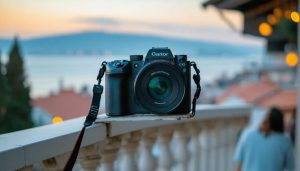
Harness the power of AI to elevate your photo editing with tools like Luminar AI, Adobe Lightroom, and Photoshop Neural Filters that use machine learning to automate complex adjustments. Experiment with AI-powered features such as sky replacement, portrait enhancement, and style transfer to transform your images in creative new ways. Streamline your workflow by using AI-assisted tagging and categorization to quickly organize and search your photo library. Embrace the cutting-edge capabilities of AI while maintaining your unique creative vision and artistic control over the final result.
Understanding the Basics of AI Photo Editing
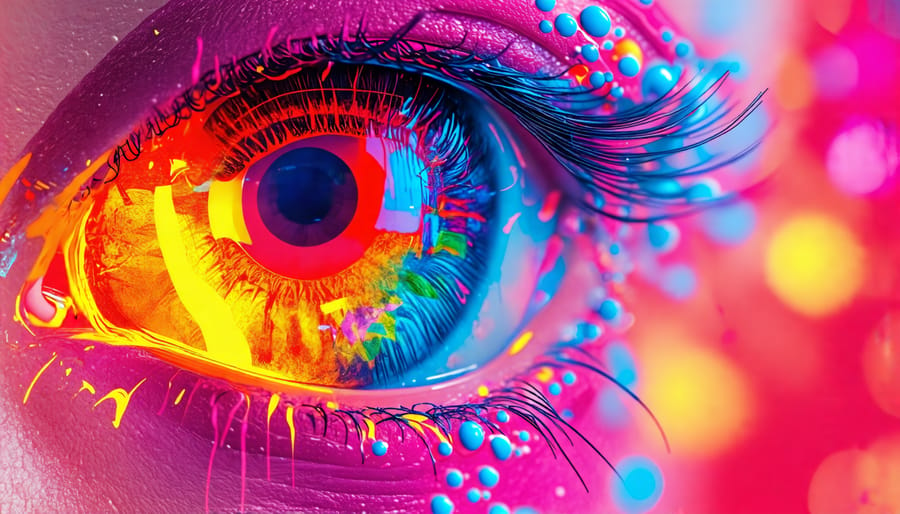
What AI Photo Editing Can and Can’t Do
AI photo editing technology has made significant strides in recent years, offering powerful tools for transforming images. One area where AI excels is object removal – it can seamlessly erase unwanted elements like power lines, photobombers, or trash from a scene while intelligently filling in the background. This saves hours of tedious manual cloning and healing work.
AI is also remarkably adept at style transfer, allowing you to apply the look and feel of a painting or another photo to your image with just a few clicks. Want to transform a portrait into a Renaissance-style work of art or give a landscape an impressionistic flair? AI can do that convincingly while preserving the original content.
However, AI still has limitations. While it can handle basic adjustments like exposure and color correction, it struggles with more nuanced, artistic lighting and toning adjustments that require a human eye. It may also have difficulty with complex masking and selections involving fine details like hair or leaves.
Similarly, AI can make simple compositional changes but more extensive, creative alterations are hit-or-miss. It’s unlikely to move elements around the frame in a pleasing way on its own. And although AI can generate or expand basic backgrounds, it often fails at creating realistic, detailed environments from scratch.
Currently, AI works best as a supportive tool to enhance efficiency, not as a complete replacement for human skill and creativity. Understanding its strengths and weaknesses allows you to leverage it strategically in your editing workflow for maximum impact.
Benefits of AI Editing for Photographers
AI editing tools offer numerous benefits for photographers looking to streamline their workflow and unleash their creativity. By automating repetitive tasks and intelligently applying adjustments, these tools can save you countless hours in post-processing. This frees up valuable time to focus on what truly matters – capturing stunning images and skyrocketing your photography skills.
AI-powered editing software can also serve as a source of inspiration, suggesting creative edits and styles you may not have considered. It opens up a world of possibilities, from subtle enhancements to dramatic transformations. Even if you’re new to photo editing, AI tools make advanced techniques accessible with user-friendly interfaces and guided workflows. With the power of AI at your fingertips, you can achieve professional-level results without spending years mastering complex software. Whether you’re a seasoned pro or just starting out, AI editing is a game-changer that can elevate your photography to new heights.
Choosing the Right AI Photo Editor
Our Top AI Photo Editor Picks
Here are our top picks for the best AI photo editing tools currently available:
1. Adobe Photoshop with Neural Filters (Desktop, $20.99/month): As an industry leader, Adobe has integrated powerful AI capabilities into Photoshop through Neural Filters. These AI-powered tools allow you to effortlessly colorize black and white images, change facial expressions, smooth skin, and transfer styles from one photo to another. While Photoshop has a learning curve, the Neural Filters are intuitive and beginner-friendly.
2. Luminar AI (Desktop, $79 one-time): Luminar AI takes a unique approach, using artificial intelligence to analyze your photo and suggest optimal templates for editing. Its AI tools can enhance skies, augment portraits, remove blemishes, and apply creative effects with a single click. The interface is modern and streamlined, making it easy for beginners to achieve stunning results quickly.
3. Pixelmator Photo (iOS, $7.99 one-time): This powerful mobile editor leverages machine learning to automatically enhance photos with a single tap. Its ML Presets can intelligently adjust white balance, exposure, shadows, and more based on image content. Pixelmator Photo also includes AI-powered tools for removing objects, selective color adjustments, and film emulation. Its touch-based interface is a breeze to navigate.
4. PhotoRoom Studio (iOS & Android, free with in-app purchases): PhotoRoom harnesses AI to swiftly remove backgrounds from your images without complex masking. It can also automatically clean up product photos, erase unwanted objects, and apply realistic shadow effects. With an intuitive mobile interface and template-based editing, PhotoRoom is perfect for creating polished images on the go for social media and ecommerce.
While these AI photo editors vary in price and platform, they all deliver impressive results thanks to machine learning technology. Whether you opt for the industry-leading Adobe Photoshop, the template-driven Luminar AI, the intelligent Pixelmator Photo, or the background-removing PhotoRoom Studio, you’ll be able to elevate your images with greater ease and speed than ever before.
Step-by-Step Guide: Editing Your First Photo with AI
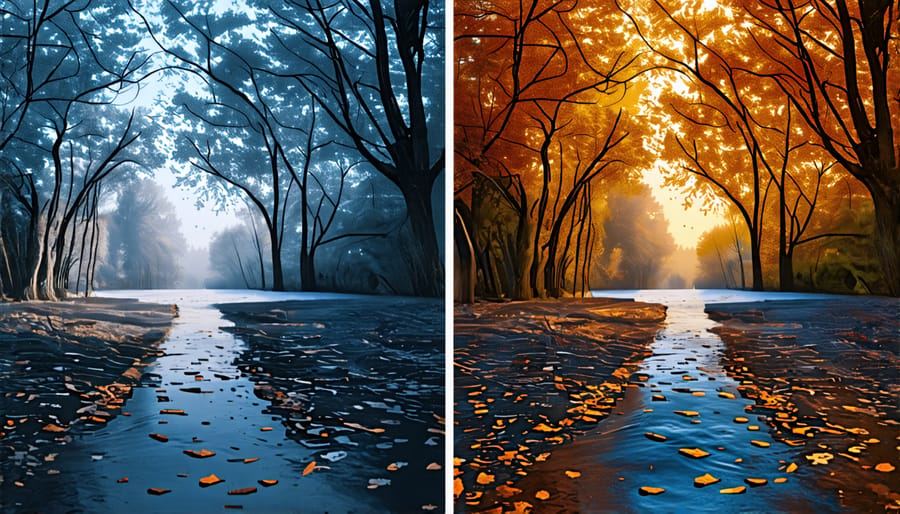
Tips for Getting the Best Results
To get the best results when using AI to edit your photos, preparation is key. Start by selecting high-quality, well-exposed images. While AI can work wonders, it’s not magic – a clearer starting point will yield better outcomes. Consider your goals for the final image and choose appropriate AI settings. For subtle enhancements, use a light touch with lower intensity sliders. If you’re aiming for a dramatic, artistic transformation, don’t be afraid to push the settings further.
As you experiment, make frequent use of the preview function to assess your edits. AI can interpret your commands in unexpected ways, so it’s important to check the output often and make adjustments. When you’re satisfied with the general direction, take advantage of fine-tuning options to really dial in the details. Many AI tools allow you to selectively apply effects to specific areas using masks or brushes.
While it’s tempting to crank every slider to the max, remember that often less is more. Overly aggressive manipulations can result in artifacts, unnatural colors, or loss of detail. Aim to enhance your photos while still maintaining a sense of realism (unless surrealism is your intent). With practice and experimentation, you’ll develop an intuition for how far to push the AI for your desired aesthetic. Embrace the creative possibilities while respecting the integrity of your original vision.
Creative Ways to Use AI Editing in Your Photography
AI photo editing tools offer a wealth of creative possibilities beyond basic adjustments. One exciting application is using AI to transform your images into stunning works of art. With just a few clicks, you can apply the style of famous painters like Van Gogh, Monet, or Picasso to your photos. Imagine your favorite landscape shot reimagined as an impressionist masterpiece or a portrait transformed into a bold, abstract creation.
AI can also be used to create surreal, dream-like compositions by seamlessly blending multiple images together. Experiment with combining disparate elements, such as a cityscape with a starry sky or a portrait with a floral background. The AI algorithms intelligently merge the images, resulting in a cohesive and captivating final product.
For photographers looking to add a cinematic flair to their work, AI can help harness the power of AI to apply color grading, lens flare, and dramatic lighting effects. These techniques can elevate a simple shot into a visually striking, movie-like scene.
One photographer who has embraced AI editing is John Smith, known for his ethereal, otherworldly landscapes. By using AI to blend multiple exposures and apply delicate color adjustments, he creates images that transport viewers to fantastical realms. In one stunning before-and-after example, Smith transformed a plain, foggy forest scene into a vibrant, enchanted woodland by infusing it with rich, saturated hues and subtle light leaks.
As you dive into the world of AI photo editing, don’t be afraid to let your creativity run wild. The possibilities are endless, and the results can be truly breathtaking. Embrace the opportunity to push the boundaries of your photography and create images that captivate and inspire.
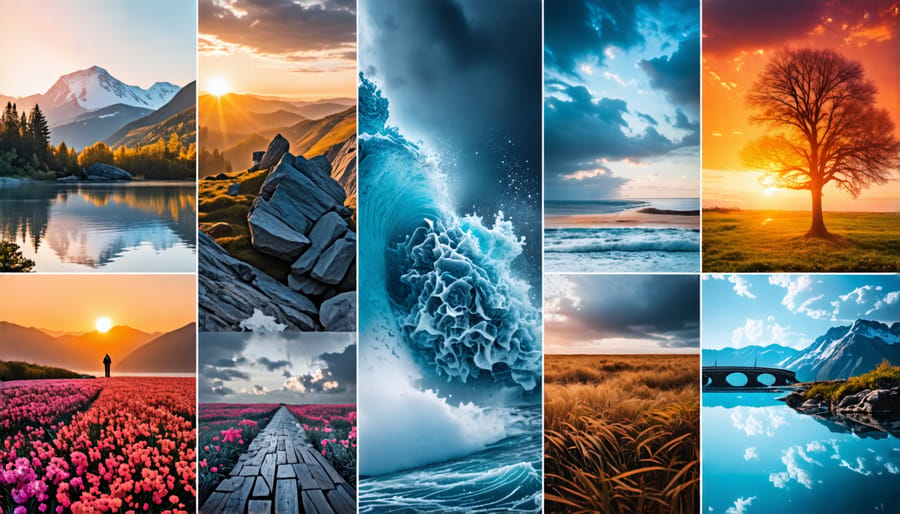
AI is an exciting frontier in photography that can enhance your creativity and streamline your editing workflow. By leveraging the power of artificial intelligence, you can achieve stunning results with ease. From automatic adjustments to style transfers and beyond, AI-powered tools offer a wide range of possibilities for transforming your images.
As you explore the world of AI photo editing, remember that these tools are designed to complement, not replace, your skills as a photographer. Experiment with different techniques and find what works best for your unique style and vision. Don’t be afraid to push the boundaries and see where your creativity takes you.
Whether you’re a seasoned pro or just starting out, AI can open up new avenues for expression and help you bring your photographic ideas to life. So dive in, have fun, and let AI be your partner in crafting unforgettable images that truly stand out.

